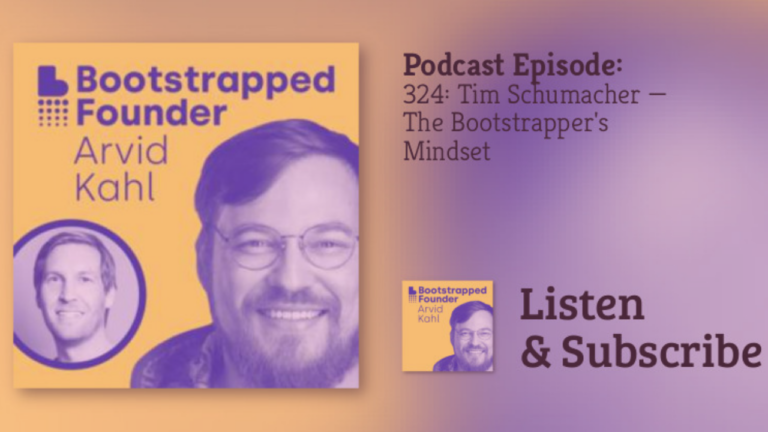There’s definitely more than one way to do keyword research for SaaS blogs. But we rarely see posts that dive deep into the pros, cons, and other important things that SaaS brands should consider. Below, I interview Ane Wiese, from saas.group, on the significance of keyword research for SaaS blogs, as she shares some useful tips.
Is keyword research still important?
Keyword research is still important for SaaS SEO, but I usually see people either focusing on it too much or not at all. Both approaches can have some bad consequences. It’s important to strike the right balance. Below are some of the outcomes if you don’t.
If you focus on keywords too much:
It’s likely that you’ll start building your content around keyword concepts instead of topics that are important to your users.
How to avoid it: You have to understand your audience and product first and foremost. Then do your keyword research. Don’t select keywords just because of search volume and keyword difficulty; select keywords that are relevant to your product and offers. This will be a lot easier when you understand the product, its features, customer needs, and pain points.
The keywords that are highly relevant to your product and that have good search volumes are your most important keywords when you start the SEO campaign. Only over time, if you track your keyword rankings and correlate them with your traffic and conversions, will you be able to identify which keywords bring in traffic, which keywords and content are more likely to generate sales, and which do both.
If you simply create content and do not focus on keywords at all
You will end up cannibalizing your own pages because you end up with too many blog posts targeting the same topic and keywords. Search engines end up crawling and indexing these posts, but then have to decide which post to serve in search results for the search queries.
How to avoid it: You can have posts about the same topic if there is a clear and different purpose for the post.
For example:
- Structure topics like this:
- Cost-saving business software for startups
- Cost-saving business software for small businesses.
- Do not structure topics like this:
- Cost-saving business software for startups
- Affordable business software for startups
Example A has a clear audience and purpose for the post.
Example B caters to the same audience, and the keywords “affordable” and “cost-saving” are too similar. It will be seen as the same message by search engines. Even if the content you write is slightly different, there most likely won’t be a clear, standalone purpose for each post.
You will also miss out on important pain points and information that users are looking for. Thinking you know your audience so well that you don’t need to do keyword research is a big mistake. In the many years that I’ve been doing SEO, I’m still surprised by what people search for online. I’ve learned to not make any assumptions.
Important takeaway
There is a lot to say about keyword research, but the main point is that users enter search terms into search engines. Search engines provide us (marketers) with information about the keywords (such as search volume and impressions), helping us determine which terms are more popular.
Use keywords to improve your content and monitor your search engine visibility. It should help inform your blog content creation efforts, but it should not be the only factor when it comes to choosing blog topics.
When I start an SEO campaign and it gets to the blog content creation part, I let the content strategists decide on the topics and I share the keyword insights with them. I then proceed to identify which of the existing blog posts should be improved, optimized, or removed from the website.
Over time, as you optimize the content and refine it even further, you learn what resonates with your audience and what doesn’t. This is the way to go about it if you really care about making your blog a go-to place that people want to visit, read, and even subscribe to. If that’s not your goal, and you want traffic in the shortest amount of time possible, then you do programmatic SEO.
Although, these aren’t mutually exclusive. You can do both at the same time. If you want both speed and quality, do both if your resources and budgets allow it. But you won’t know what keywords and content really work if you don’t take the time to analyze and learn from what you’ve done.
Study your data, gather insights
Use keyword insights as a guide. Blog post keywords are different from landing page keywords. The way you optimize for it is different.
How keywords can be used with blog post topics
Step 1: Choose your blog post topic, based on a combination of knowing your audience, their pain points, values, psychographics, etc. If you feel stuck here, you can look at competitor websites or use ChatGPT to help you brainstorm ideas and get your creative juices flowing. Don’t copy outright, it won’t help you create anything that resonates with your audience.
Step 2: Based on the known values, psychographics, and other characteristics of your users, select the sections of your post. Determine how your product slots into your chosen topic. Decide if this is going to be a “promotional” post or an “informational” post. If it’s promotional, mention your product more throughout the post, if it’s informational, avoid pushing the product in front of the user and naturally include it as a solution at the appropriate time by mentioning it only once or twice or not at all.
Step 3: Bring your keyword research insights and this information together. Determine the set of keywords that would best go with the topic and sections covered in the blog post. Have the SEO specialist optimize it before you publish it. You’ve created content for people that search engines will also love.
Getting the right balance takes time. Don’t believe anyone who says they know exactly what will work when they start a SaaS SEO campaign. SEO experts have experience in the field, which means they’ve probably used similar strategies before. They have learned from them, which greatly aids in saving time and money for your campaign. However, your product and audience are still unique, so it’s crucial to understand what works and what doesn’t for your readers.
Tune in to the saas.unbound episode with Stefan Avram, co-founder and Head of Growth @Wundergraph to learn how the blog has become one of the biggest user acquisition channels for the company.
Table of Contents
Weekly newsletter
No spam. Just the latest news and articles from the world of SaaS and Acquisitions.




